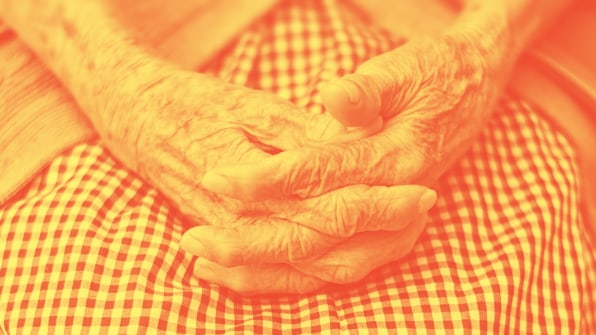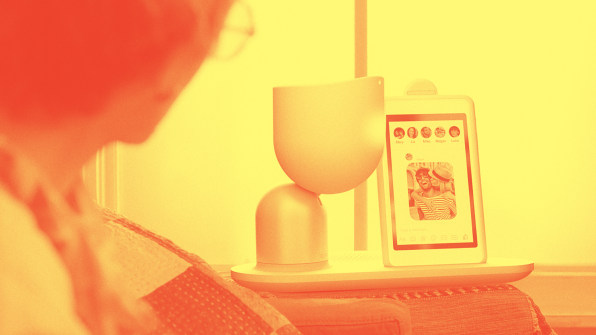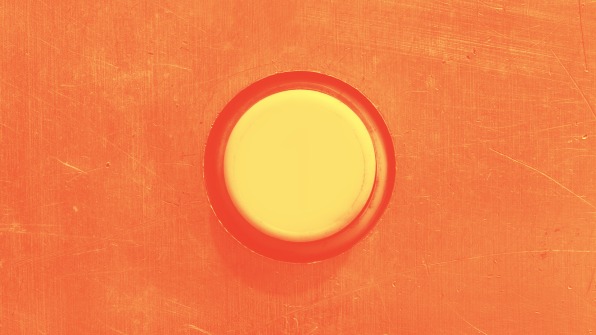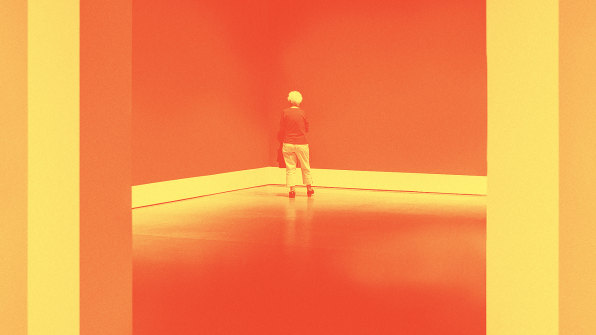What Is Forecasted Product for Elderly Baby Boomers
The U.Due south. Demography projects that at that place will exist approximately 83.7 million adults over the age of 65 in the U.S. by the yr 2050–double the number in 2012. With the explosion of the elderly population, designers are facing a challenge–and an opportunity–to deliberately design products that conform the changes that come with age.
Targeting this generation is nothing new. For decades, baby boomers have been a focus for companies and marketers thanks to their sheer size as a demographic. At present that they're aging, the business case for continuing to cater to the generation remains just as strong. This means blueprint that accounts for crumbling bodies and minds; equally they get older, people face challenges similar increased difficulty with multitasking, remembering new behaviors, and decision-making fine-motor function. The benefits for designing to these challenges are obvious, only when you create a production that's easier to apply for people of dissimilar abilities, y'all oft end upwardly creating something that's better for all users–a core tenet of inclusive blueprint.
A new study published in the periodicalErgonomics in Design focuses on simply how designers should approach creating products–from app interfaces to wearables–for the elderly. The study, co-authored past doctoral student Joanna E. Lewis and associate professor of psychology Marker B. Neider at the Academy of Primal Florida, highlights inquiry on how people's cognitive, physical, and sensory capabilities change equally they age. Here are four principles to aid designers adapt to the demographic shift.

Cutting The Multitasking, And The Complexity
According to the paper, a large trunk of research shows that cognitive executive function–pregnant the set of brain processes that control behavior–can tiresome down and deteriorate when people historic period. That ways that devices that require users to either constantly remember information or multitask aren't ideal for older users.
Instead, the device itself should perform that piece of work for the user, alleviating the necessity of remembering the past and futurity steps needed to consummate a task. If there'south a time frame to consummate a task, effort to expand it or eliminate information technology birthday. The fewer things a person has to exercise to achieve a task, the better.
One example of skilful blueprint that takes older adults' slower executive function into account: A system called Melt's Collage, developed in the early on aughts at Georgia Tech's Everyday Calculating Lab, aims to help elderly cooks remember the concluding several steps they took while making a repast and then they don't lose their place among distractions. A epitome device used four cameras hidden in the kitchen to track ingredients, each of which had sensors, and and so displayed photos of the cook adding ingredients on a screen mounted above the counter. (The engineering at the time wasn't avant-garde plenty to observe motion and interpret images independently, so researchers had to manually take pictures when an ingredient was added.)
Providing a ways of easily viewing past deportment on a device–similar a wearable that not just reminds the user to accept their medication, just can too be referenced afterward in the mean solar day if they've forgotten whether they took it already–is a simple manner for designers to add accessibility to their products.

The More Cues, The Better
Research also shows that older adults can have trouble with memory–though not all types. While implicit memory, or the ability to think learned or memorized tasks like picking upward the phone, is usually less affected past aging, studies take shown that other kinds of memory can suffer over time. Particularly, remembering specific pieces of information, like a person'due south name or the time of an appointment, can decline with age.
That means that older people generally have a more difficult time remembering how to perform tasks that aren't however learned or memorized. So while navigating an app interface might seem intuitive for a young designer with a sharper memory, it may not exist clear at all for an older person. Designers should provide more than cues and instructions inside interfaces. That also means existence more explicit. For instance, if your wearable is designed to remind the user to have their medication, information technology should be clear that they should accept it when the device beeps.
Take the Yves Béhar-designed personal companion robot, ElliQ, that was designed with this in heed. Rather than requiring the elderly person to know how to utilise it, the robot actually asks them questions and gives them recommendations for what to do or say. For instance, its sensors can recognize if its owner has been sitting in a chair with the television on for vi hours–causing the robot to ask the person if they'd like to go for a walk.
Merely go on in mind: Just because in that location'south more than information doesn't mean in that location should be unnecessary information. The fewer distractions, the easier it will be for older people to use an interface effectively.

Make Buttons Bigger And More Obvious
According to the Centers for Disease Control and Prevention, 50% of adults age 65 endure from arthritis. And that's non the but disease that can cause motor skills to deteriorate: Parkinson's, multiple sclerosis, and Huntington's disease can as well make precise movements more than difficult. That means that wearable interfaces–like those of smart watches–demand to have significantly larger buttons, with interfaces that don't require such fine motor skills to navigate.
Since older adults also tend to endure from vision loss, making buttons and interfaces bigger and simpler tin can help make wearables more accessible. The newspaper cites one book from 2009, which has a very specific guideline for designers to follow: the size of a 4-letter give-and-take should be the length of your thumb when when your arm is extended straight in front of you. While that may seem incompatible with today's typical wearable devices, it's a helpful measuring stick for accessibility.
The elderly also tend to have less effective peripheral vision. So not simply should buttons exist larger, merely notifications and navigation cues should be front and centre, rather than off to the side.

Choices, Choices, Choices
Non all elderly adults suffer from the loss of motor skills, memory, vision, and executive function–some may need bigger buttons to successfully navigate an interface, while others may require more than didactics. The best way to ensure that anyone can use a device–and that its design doesn't actually stop anyone from using information technology–is to provide options. For those that may be hard of hearing, provide customizable volumes so that sounds can be adjusted to fit into the user'southward optimal range of frequencies. When text sizes are small, allow for increased sizes or for text-to-voice communication conversion.
While all of these research-backed tips are vital for designers to keep in mind when designing wearables and interfaces aimed at the boomer population, they're also good advice for creating products that are more than inclusive for anybody. While big buttons might be bully for an elderly person with Parkinson's, they could likewise exist a boon for someone who has only cleaved their wrist. Text-to-spoken language capabilities are beneficial to an older person with poor eyesight, to a blind person, or even just a busy younger person on the go.
By designing devices that accept more inclusive capabilities, designers don't just make their products more attainable to some–they brand them meliorate for everyone.
What Is Forecasted Product for Elderly Baby Boomers
Source: https://www.fastcompany.com/90131258/baby-boomers-are-aging-heres-how-design-will-have-to-adapt